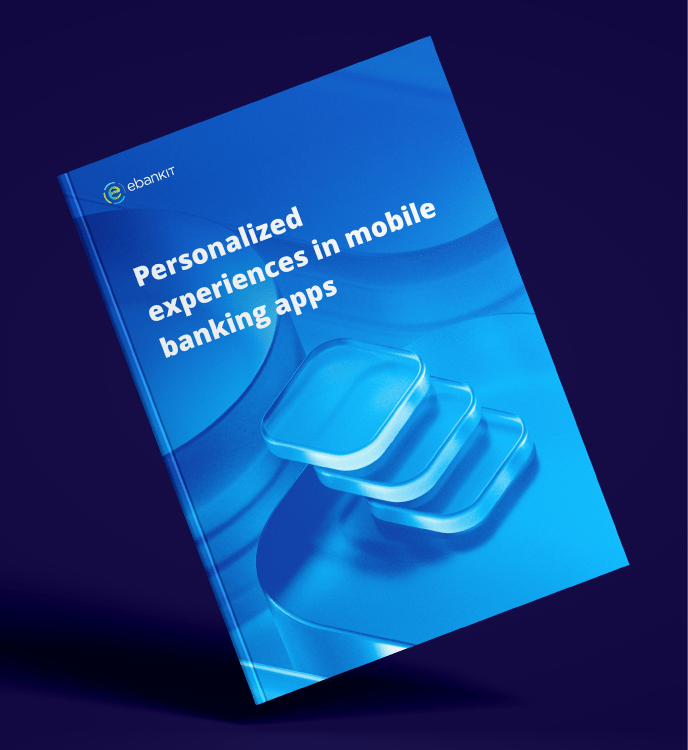Gartner, Market Guide for Digital Banking Multichannel Solutions, Jason Malo, Jeff Casey, 5 January 2022.
GARTNER is a registered trademark and service mark of Gartner, Inc. and/or its affiliates in the U.S. and internationally and is used herein with permission. All rights reserved.
Gartner Market Guide for digital banking multichannel Solutions
As the world of finance is quickly changing and transforming, banks and credit unions need to evolve with it. At the moment, financial institutions are seeking digital transformation, which is why bank and credit union CIOs should assess the different omnichannel solutions' available to support the best practices and respond to customer needs and market variables with new and enhanced services.
In the Market Guide for digital banking multichannel solutions by Gartner, there were detected 4 main key findings that are valuable to any bank CIO that we believe will improve their digital strategy and appeal to more clients as well as retain the already existing ones.
1. Exceptional multichannel delivery
2. Extended offerings beyond mobile and online self-service channels
3. The ability to extend the off-the-shelf functionality of multichannel solutions through APIs
4. Customer journey continuity across channels
Digital banking multichannel solutions are evolving beyond internet-based self-service channels, online and mobile, to include integration with branch and contact center channels in banking. The need is high for enhanced multichannel capabilities from banks.
- Gartner
1. Exceptional multichannel delivery
In their Market Report, Gartner has stated that "banks top three digital technology drivers depend on exceptional multichannel delivery." A customer-first approach is essential for banks and credit unions to survive in this new digital era.
Financial institutions must quickly adapt to new trends and innovative technology through the medium of omnichannel services. Such platforms make it easier to provide and integrate new technologies for the customer to use and offer an extensive choice of products.
Therefore, Implementing an omnichannel platform is the ideal answer for banks and credit unions. An omnichannel digital platform can combine a variety of digital services that would be prohibitively expensive for institutions to develop on their own.
2. Extended offerings beyond mobile and online self-service channels
According to Gartner, "the focus is shifting from channel applications to customer journey continuity across channels". While online banking was the most popular means for banking clients in the 2000s, mobile was the most popular in the 2010s. In this new decade, what financial organizations and their clients want is a channel-agnostic platform that adapts to each user and provides tailored, humanized services.
To provide the best user experience, an omnichannel platform can combine various services such as front-end call centers, mobile and internet digital channels with integrated technology such as AI, robots, biometrics, and so on.
Yet online and mobile-only multichannel options are no longer sufficient. Contact centers, branches, kiosks, social media, and virtual helpers are examples of supported platforms. With so many options Gartner encourages CIOs to "evaluate these solutions by assessing channel-specific functions, curation of common APIs and availability of metrics to support best practices".
Furthermore, now it is expected for all omnichannel solutions to enable financial institutions to manage client experiences, with an emphasis on in-house integrations, core-agnostic architecture, comprehensive development, replacement or innovation via reusable code, and third-party extensibility. It comes to CIOs to determine what they need for their digital strategy.
3. The ability to extend the off-the-shelf functionality of multichannel solutions through APIs
According to Gartner, "Bank CIOs should evaluate these solutions by assessing channel-specific functions, curation of common APIs, and availability of metrics to support best practices." You can customize and enhance client journeys with an API-enabled tool in order to tailor your product to their requirements at reduced development costs.
Omnichannel platforms combine a controlled set of APIs, including standardized banking use cases that are most pertinent when consumers move from one channel to another, to include the human aspect of client experience.
Gartner urges "Bank CIOs should evaluate these solutions as a way to improve the customer experience through process consistency and reduced development by leveraging APIs and other reusable code components for common banking functions.” Thanks to open data and open banking, banks can give the receiving channel the customer's information in a secure way.
This creates synergy and a smooth experience for the client across all channels and devices. This offers the option to use self-service and assisted service modes independently, as well as to switch between them seamlessly.
4. Customer journey continuity across channels
Gartner "survey data indicates that customers still see value in physical channel access and are more likely to adopt new channels while retaining a foothold in others. Customers still value the access to expertise and personalized advice that they feel is delivered best by a person."
This is why we believe the demand for an omnichannel solution has shifted its focus to a customer-first approach, trying to replicate the same feeling of face-to-face interactions. Banks and credit unions need tools to study and analyze their own customers' journeys in order to be more effective in offering services to their customers precisely when they need them. Omnichannel solutions and APIs provide the tools to achieve that.
According to Gartner, “a bank should update its digital engagement strategy in light of shifting customer behavior patterns and the bank’s revenue and cost targets that are under competitive pressures. From a customer perspective, that means adopting digital and in-person differentiators as outlined above. From a business perspective, that means having a view on the types of traditional products, types of nontraditional products, number of branches and forecast staffing levels for contact centers. That digital engagement strategy drives the types of information needed to select a digital banking multichannel solution.”
CIOs must determine which channels are the most worth investing in according to their client's needs through a digital engagement strategy.
To succeed, financial institutions need to adopt a humanized digital banking experience that merges an in-person and digital approach, a multimodal digital banking solution.
This report is no longer available.




%20without%20SAM%20-%20Maturity%20Level%20-%202-KO%20edit.webp?width=160&height=57&name=67768-ebankIT%20Platform%20-%20CMMI%20Development%20V2.0%20(CMMI-DEV)%20without%20SAM%20-%20Maturity%20Level%20-%202-KO%20edit.webp)
